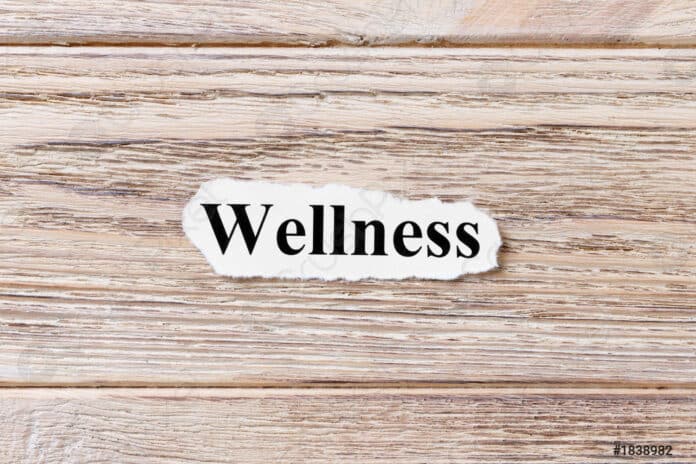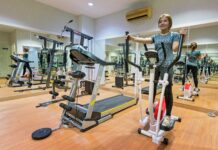Table of Contents
In a world where fitness trends come and go, one practice has withstood the test of time: stretching. Beyond being a warm-up or cool-down activity, stretching is foundational to our physical resilience and mental well-being. It’s not just for the lithe yogis or elite athletes; it’s a fundamental piece of every health puzzle.
Stretching is like a reset button for your body, a way to maintain its optimal performance, and a tool for preventing injury. If you’ve yet to make stretching a central part of your wellness routine, this post is for you. We will explore the myriad benefits of stretching, the various types of stretching, how to incorporate it into your daily routine, and why it’s as crucial for the desk jockey as it is for the marathon runner.
The Hidden Power of Stretching
It’s essential to prepare your muscles before engaging in any other physical activity, whether a relaxing jog or a vigorous weightlifting session. And after you exercise, your body will thank you for a good stretching session to help speed up recovery. Stretching increases your flexibility and provides a slew of other benefits that can significantly improve your overall health and wellness.
Improved Flexibility and Range of Motion
Flexibility is the range of motion in a joint or group of joints, and it’s vital to maintaining agility and preventing injury. Engaging in a regular stretching regime can increase flexibility, allowing you to move your body more freely and comfortably. This is especially important as we age, as our flexibility naturally decreases.
Injury Prevention and Muscle Recovery
Taut, short muscles are more prone to tears and strains. Stretching helps elongate and relax muscles, preventing injury during exercises and sports. Furthermore, stretching can alleviate muscle soreness and speed up recovery after a challenging workout.
Enhanced Posture and Body Alignment
We’ve all heard the admonishments to sit up straight, and for good reason. Poor posture can lead to musculoskeletal imbalances and chronic pain. Regular stretching can counteract the effects of a sedentary lifestyle and encourage proper body alignment.
Stress Relief and Relaxation
Physical tension is often tied to emotional stress. Stretching not only relaxes tight muscles but also helps to calm your mind. It’s an opportunity to slow down, focus on your body, and promote a sense of tranquility. This combination of physical and mental relaxation can be particularly beneficial for managing stress.
The Stretching Spectrum
There are several recognized methods of stretching, each with its technique and benefits. The key is to select the correct type of stretching for your activity level and fitness goals.
Static Stretching
Static stretching is the most common form, where you ease into a position and hold the stretch for a set duration, typically 15-30 seconds. This is often done during the cool-down phase after a workout.
Dynamic Stretching
Dynamic stretching involves moving parts of your body and gradually increasing your range of motion. It is a great way to warm up before exercise as it mimics the movements you’ll perform during your workout.
Proprioceptive Neuromuscular Facilitation (PNF) Stretching
PNF stretching is an advanced technique that involves a contraction and subsequent relaxation of the muscle targeted for stretching. It is typically done with a partner to achieve deeper flexibility than static stretching can provide.
The Art of Incorporating Stretching into Your Routine
The key to effective stretching is consistency. Here’s how to incorporate it into your routine to get the most out of it.
Pre-Workout vs. Post-Workout Stretching
Dynamic stretching is perfect for a pre-workout routine, as it prepares the body for the activity. Static stretching is best done post-workout, as it aids recovery by promoting blood flow and reducing muscle tightness.
Duration and Frequency of Stretching Sessions
The American College of Sports Medicine recommends that adults do flexibility exercises at least two or three days a week for the best results. Each session should last between 5-10 minutes.
Tips for Effective Stretching
Focus on major muscle groups, but remember the smaller ones. Breathe deeply and slowly as you stretch, and don’t push your body past its limits. Remember, stretching should never be painful.
Stretching for Your Lifestyle
Stretching can and should be tailored to your specific daily activities and fitness level to ensure that it’s both enjoyable and beneficial.
Stretching Routines for Athletes
High-intensity athletes require more specialized stretching routines that focus on areas frequently subjected to repetitive and high-force movements. These may involve longer and more frequent sessions with the assistance of a coach or physical therapist.
Stretching for Desk-Bound Individuals
Those who spend long hours sitting at a desk are prone to tight hip flexors, hamstrings, and a stiff upper back. Regular standing breaks with brief stretches help counteract this. Simple yoga poses like downward dog and cat-cow can also be very beneficial.
Stretching for Seniors
The focus for seniors is often on maintaining functional mobility and preventing falls. Regular stretching exercises can be performed standing or sitting and should focus on areas that commonly become tight over time, like the calves, hips, and back.
The Mind-Body Connection in Stretching
Stretching is not just a physical activity; it’s also an opportunity to engage in mindfulness and enhance your mind-body connection.
Breathing Techniques
Conscious breathing patterns can deepen the efficacy of a stretch. Inhale deeply as you prepare to stretch, exhale as you move into the stretch, and continue to breathe deeply and slowly as you hold the position. This can help relax both your body and mind.
Mind-Body Connection During Stretching
Focus on the sensation in your body as you stretch. This will prevent you from overextending yourself and strengthen the connection between your mind and the muscles being stretched. This heightened awareness can lead to improved performance in physical activities and a deeper understanding of your body’s signals.
Conclusion: The Role of Stretching in Your Wellness Journey
Stretching is the bridge between physical fitness and holistic well-being. No matter what stage of your wellness journey you’re at, incorporating regular stretching has benefits that extend far beyond flexibility and mobility. The time you dedicate to stretching each day is a gift to your body, a practice that encourages longevity and vitality. It’s not about touching your toes or performing advanced yoga poses; it’s about nurturing and appreciating the incredible machine that is your body.
In your next fitness session, whether a walk in the park or a session at the gym, start with a good stretch. You’ll open up to a world of benefits that will add depth to your exercise routine and bring you back to the essence of movement and well-being. Remember, stretching is not an act of simplicity but a profound gesture toward your health, vitality, and peace of mind.





